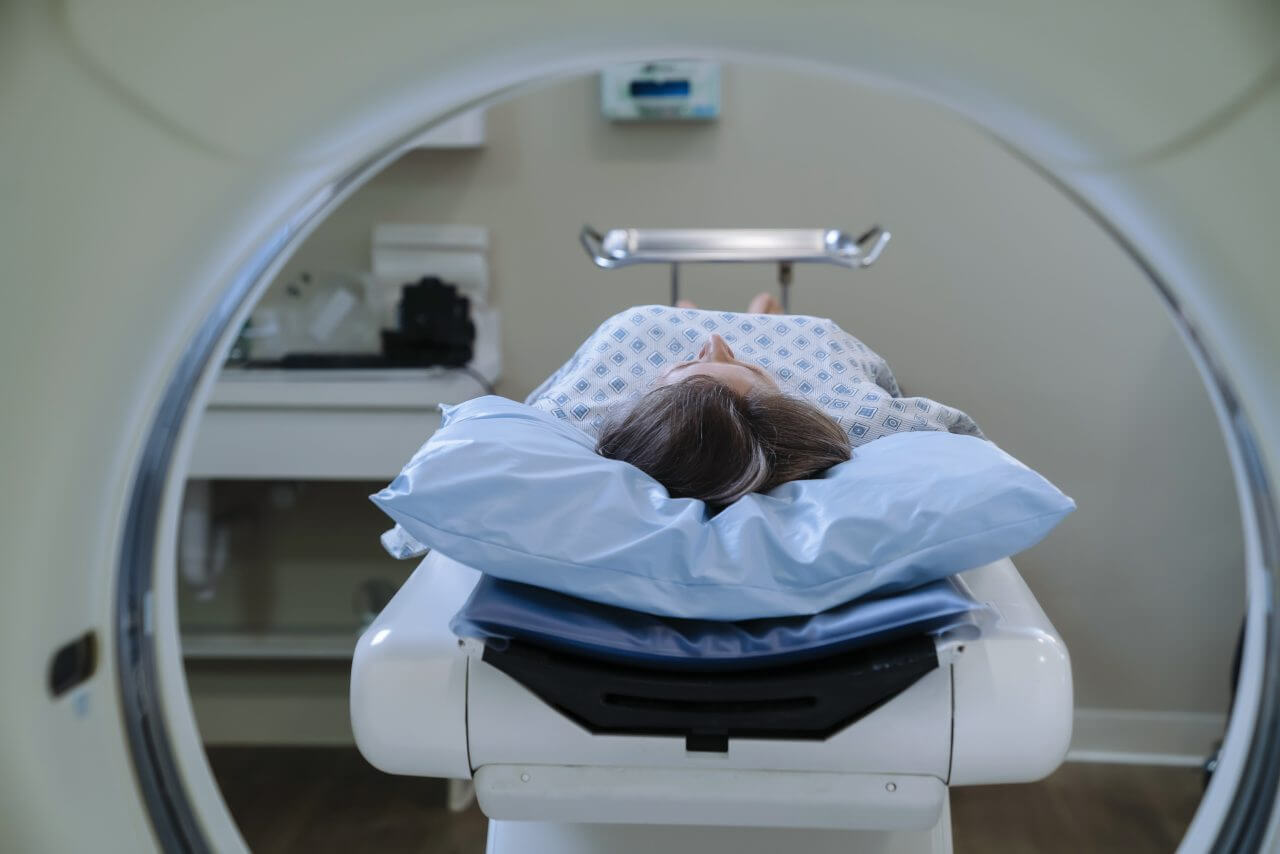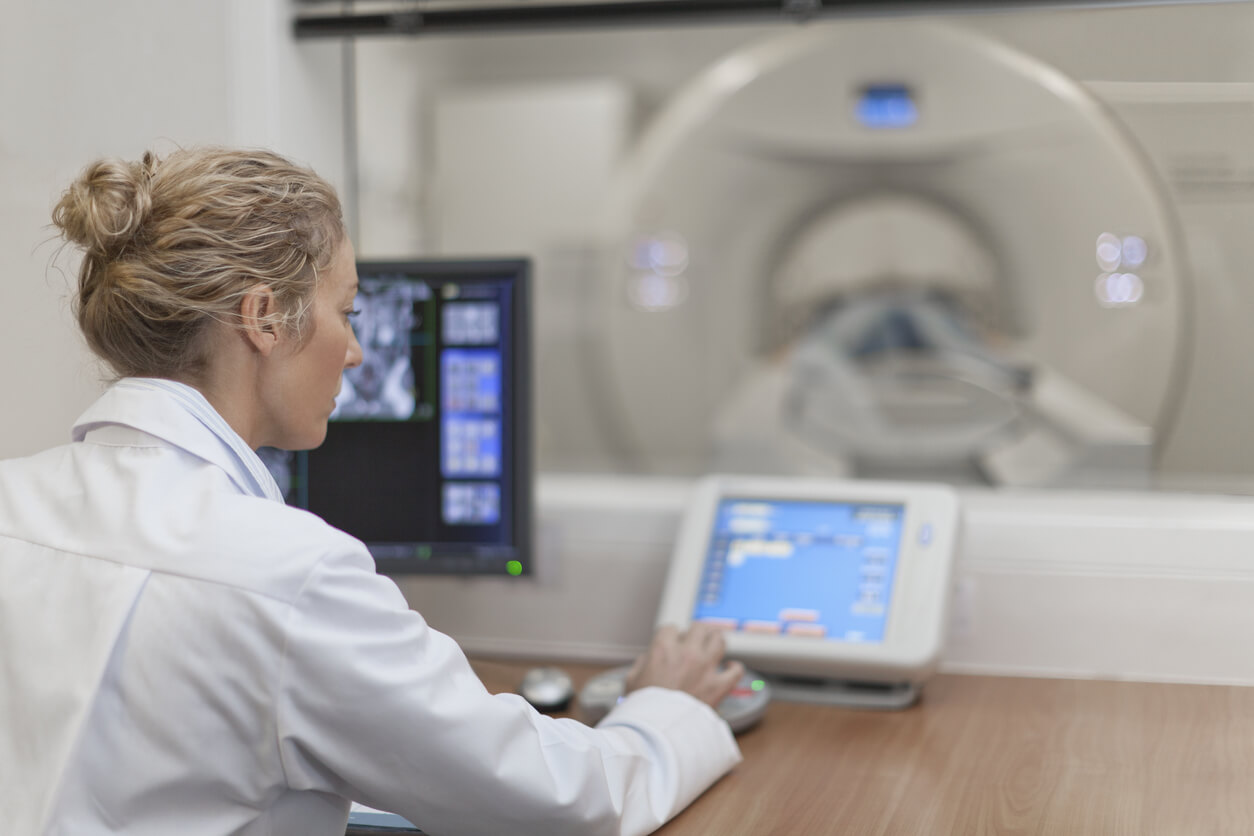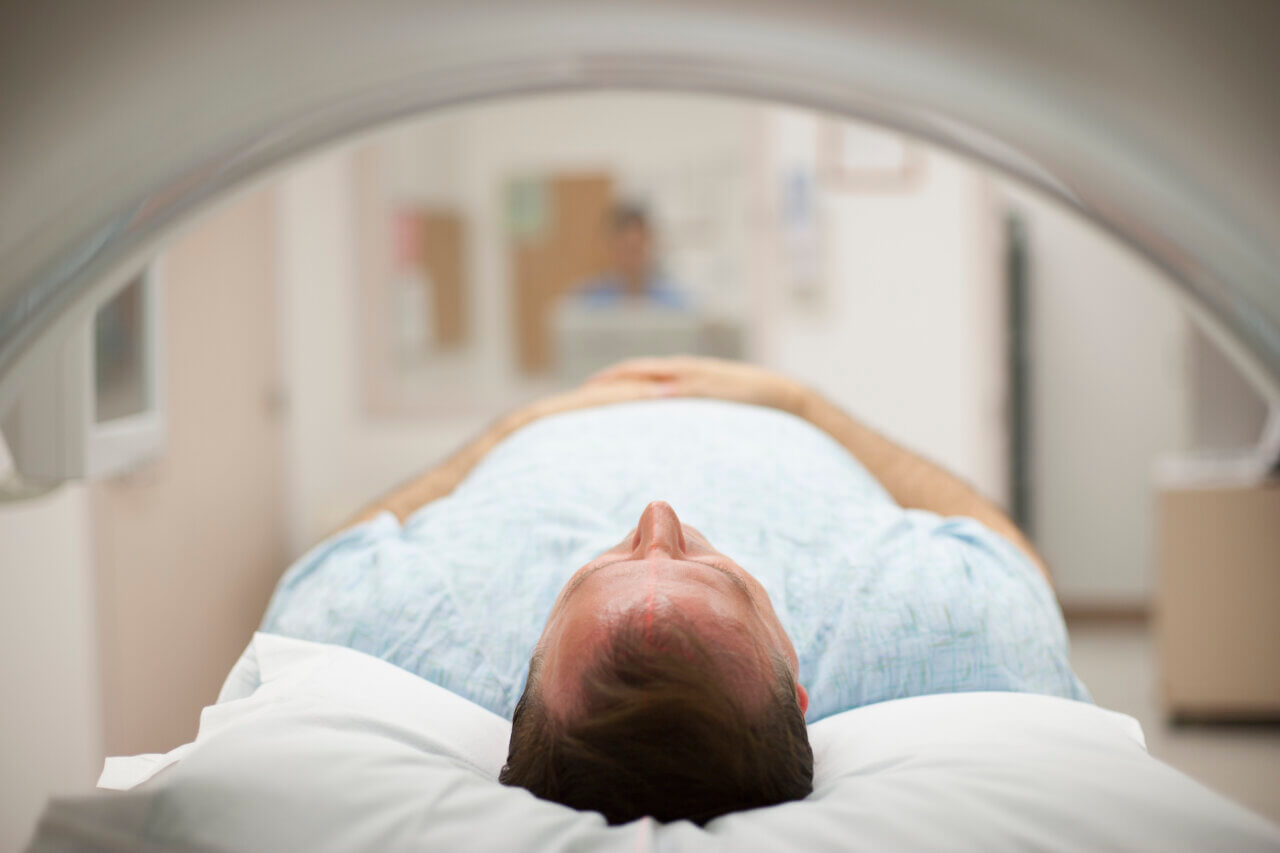MRI vs. fMRI: What Are the Differences?

Magnetic resonance imaging (MRI) is a non-invasive medical technology that produces images of the body’s interior anatomy. These images are like camera snapshots, capturing single moments in time. A functional MRI (fMRI) is a more sophisticated type of MRI that creates a dynamic record of metabolic activities over time. Functional-MRI technology is focused exclusively on the brain. MRIs show us how the brain and other organs are structured; fMRIs tell us how the brain operates.
Magnetic Resonance Imaging (MRI)
Magnetic resonance imaging (MRI) is a type of medical imaging that uses strong magnetic fields and radio waves to produce images of organs and related structures in the body. Unlike CT or PET scans, an MRI does not use X-rays or other forms of ionizing radiation.
How Does an MRI Work?
Magnetic resonance imaging works by immersing patients in a pair of strong magnetic fields, one general and a second that focuses more specifically on hydrogen nuclei in the body. The human body is largely composed of water (H2O), so hydrogen is abundant. Hydrogen’s magnetically sensitive nuclei align with the MRI-created fields, like iron filings with a magnet. Radio waves released by the scanner are then absorbed as energy by the nuclei. When the radio waves cease, the nuclei return to their aligned state, emitting tiny energy signals. It is these signals that the computer transforms into visual imagery.
MRIs are used to detect or assess a variety of conditions in many parts of the body. For example, an MRI of the brain and spinal cord can reveal evidence of brain injury, stroke, blood vessel damage, and spinal cord injuries.
Functional Magnetic Resonance Imaging (fMRI)
Functional magnetic resonance imaging (fMRI) is a specialized form of MRI test that is used to examine the brain’s functional anatomy, meaning the part of the brain that handles critical functions. An fMRI measures small changes in blood flow that occur over time with brain activity.
The fMRI scan can help doctors assess the effects of a stroke or other condition affecting the brain or spinal cord. It is also used to detect structural abnormalities that cannot be detected with other imaging techniques. The information from an fMRI helps a doctor determine the most effective treatment or assess how well a chosen treatment is working.
How Does an fMRI Work?
Functional MRIs record evidence of brain behavior, based on changes in neural activity which occur in one or more parts of the brain during all human activity. The most common fMRI method is called Blood Oxygen Level Dependent or BOLD. Neural activity is measured indirectly, by increases in blood flow and oxygen levels that occur whenever we undertake any kind of physical or intellectual task. Areas of the brain involved in a particular activity will show evidence of greater blood flow by generating stronger-than-usual signals during an fMRI scan. BOLD is a relative method, comparing oxygen levels during active periods with those during rest.
A second fMRI method, called arterial spin labeling or ASL, is able to measure changes in blood flow directly. Though it is sometimes combined with BOLD, ASL has limitations that curtail its application in routine fMRI work.
What Is It Like to Have an MRI or fMRI Test?
MRIs and fMRIs are both painless, non-invasive medical procedures. An MRI machine looks like a large donut. The circular casing houses the magnets. The patient is positioned face up on a table in the center opening of the machine for the scan.
Because of the strong magnetic field that is produced in the test, no metal is allowed inside the procedure room. This includes items like cell phones, watches, dentures, hearing aids, and underwire bras. Some tattoos may contain metal, so it is important to let your doctor know if you have tattoos.
Both an fMRI and MRI exam is noisy, with loud, repetitive tapping and thumping sounds. However, patients are offered special metal-free headphones to help block the sound. Young children and persons who are claustrophobic may be given a sedative so they can remain still and calm during the scan.
Periodically during the exam, you will be asked to perform a simple task, such as squeezing one of your hands, or thinking of certain words or images. At other times, you’ll be asked to be quiet and perhaps close your eyes. This is to measure differences in blood flow during active and passive states of mind, which is critical to success in the BOLD method.
When the examination is complete, the technician will remove you from the scanner and help you up. You can change back to your street clothes and return home. Imaging scans are painless and impose no limits on physical activity afterwards.
Comparing MRIs and fMRIs
MRIs and fMRIs are similar technologies. Their primary difference lies in their purpose: MRIs create a picture of the body’s interior structures, while fMRIs record metabolic activity over time. Whereas MRIs are utilized with various parts of the body, including the brain, fMRIs focus solely on the brain. MRIs were developed first and are more widely prevalent; fMRIs are newer, less common, and costlier to use.
Detailed and accurate, MRIs and fMRIs are valuable diagnostic tools that can help your doctor assess and treat a wide range of medical conditions.
Learn More About MRIs and fMRIs from Baptist Health
Fast, efficient and highly detailed, MRIs and fMRIs are very valuable diagnostic tools that can help your doctor accurately assess and effectively treat a wide range of medical conditions.
Baptist Health provides safe and efficient inpatient and outpatient diagnostic imaging, including MRIs and fMRIs. As one of the area’s most advanced diagnostic imaging centers, our services are fully integrated with our excellent medical care. In this way, we work together to detect the earliest signs of disease or injury and provide expert treatment.
If you need diagnostic imaging, you can count on the compassionate and skilled team at Baptist Health to be with you every step of the way. From helping you prepare for your tests to listening carefully to your questions and clearly explaining everything you need to know, you’ll appreciate our careful attention and support.
To schedule an appointment, contact your Baptist Health primary care provider.



